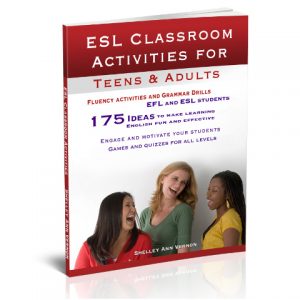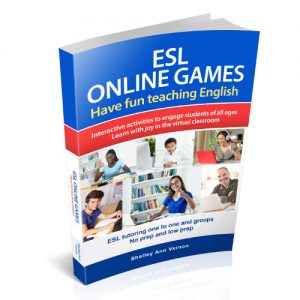Suitable ESL conversation questions for adults will depend on your students, who they are, their cultural background, and their life.
Pitfalls with ESL Conversation Questions for Adults
Who are your students, and how are they?
If you are going to your first conversation lesson, try to find out as much as you can about your students beforehand, especially if you are teaching refugees, but even if you are taking a new class in school. Some questions that to you seem banal may be offensive or problematic, such as asking a refugee about their family, all of whom may have been killed. Given that it is impolite to say ‘no’ in Japan, this puts asking conversation questions to a Japanese student in a whole new light.
Another example might be that student has just lost their father to thrombosis, which would be worth knowing before going into class. Say you are doing a conversation class on jobs and careers; you don’t want to ask that particular student about what their dad does for a living. The student in question might want to share what their father did with the class, but it should come from them if they feel like talking about it and not by the teacher inadvertently putting them on the spot.
Avoid conflict and emotive issues
In a desperate attempt to get your students talking, you might think that a gripping topic like euthanasia would make a good talking point. It might, but talking about the end of life, illness, and death is not really how I would choose to lighten up my English conversation classes. Often, in the case of ethics, some students will have strong views and take over. No one else dares to contribute, and the lesson becomes a tirade, not a conversation. In contrast, a discussion about small steps to feel good every day would be easier going and more inclusive.
Structuring a conversation lesson
However attractive a topic, it can be a daunting task to discuss the same thing for half an hour non-stop. Therefore, split the lesson into chunks.
ESL Conversation Questions for Adults – The first question!
Always start by asking how people are, even if this question is addressed collectively to the class. In many cultures, this polite banality is almost a ritual. So even though many don’t pay attention to the reply, which is usually “fine thanks,” or, if you are English, “not too bad,” not asking is worse!
Conversation warm-up and bonding
Start with 5 mins of general chat about your students and what they got up to since you last saw them. If your class is not too large, having each student give their “personal weather forecast” for a minute is an excellent bonding experience. Each student, in turn, says something about how they feel today, or something that they feel good about, or something they did that was fun recently, etc. If it’s the first lesson ever, students can introduce themselves and say why they have chosen to attend the class. If you have more than ten students, keep this short for each person; otherwise, make groups and listen in randomly.
This friendly warm-up builds the student-teacher bond, as well as being helpful listening and speaking practise. Naturally, therefore, you don’t want to make any corrections here. Perhaps instead, make a note of any frequent errors and schedule them for a future lesson.
Grammar or language focus
This section of the lesson is particularly constructive with beginners and lower intermediates. Their language skills will be limited, so keeping a conversation going is going to be complicated. However, this section should still focus on listening and speaking rather than handing out worksheets and writing tasks. Instead, present the grammar point and then drill it through games like Battleships or Find the Pairs. With this activity, insist on accuracy.
The art of conversational questions
It’s a no-brainer, but people like talking about things that interest them. One person might be an eco-warrior, eating organic all their life and wanting to save the planet but, the other might get through a bunch of plastic to drink one coffee without turning a hair. The topic bores and depresses them slightly. So don’t go there! You want students to enjoy their time with you, so talking about things they like is the secret.
That said, in a classroom, you have a mix of interests and abilities, and no one topic will appeal equally. To overcome this, give fact-finding challenges, inciting students to learn new things. To encourage dialogue, ban one-word answers from class as a rule. Instead, ask more questions that need some thought, like: What did you like about it? Why? What if? Would you? Describe? How? How else could? What else could? Where else could? What other way?
General knowledge
I like to do general knowledge quizzes with students because both teacher and pupil learn things. You ask each other general knowledge questions, write down the question on one card, and the answer on another (use colours for themes, like RED for geography, green for nature, yellow for society…). Make teams, play, and keep all the questions for another class. This quiz will grow and grow, and at each lesson, you pull out questions you have covered and add new ones.
Creating additional questions can be a homework task. You can name capital cities, works of art, composers, and authors. Learn about historical events, science, and technology. Include fun stuff like fashion, celebrities, sports, popular bands, lyrics, or what Madonna asks for when staying in a hotel room. Answer: A new loo seat. What does Jennifer Lopez require in a hotel room? Answer she has asked for a headset decorated with diamonds and a white couch. (Seriously?) Elton John requires that he goes home at night.
The use and re-use of the same questions, plus adding new ones, will improve language fluency skills over time. With this, you insist on accuracy.
When the conversation flags
If you or the students are tired, try a language board game. Games are included in both my books for teens and adults. If your student likes music, look at the lyrics of one of her favourite songs. Play a game like Fill in Drill to learn the first verse and sing it together until you can both do it! For homework, have the student write the message, story, or meaning of the song.
ESL conversation resources
Blogs and books
Here are two other posts; tips for successful ESL discussions and a stimulating conversational speaking activity for teens and adults.
-
Sale Product on sale
 Games and Activities for Teens and Adults
Games and Activities for Teens and Adults€19.97Original price was: €19.97.€15.33Current price is: €15.33.Rated 5.00 out of 5 based on 12 customer ratings -
 ESL Online Games€19.97Rated 5.00 out of 5 based on 4 customer ratings
ESL Online Games€19.97Rated 5.00 out of 5 based on 4 customer ratings


